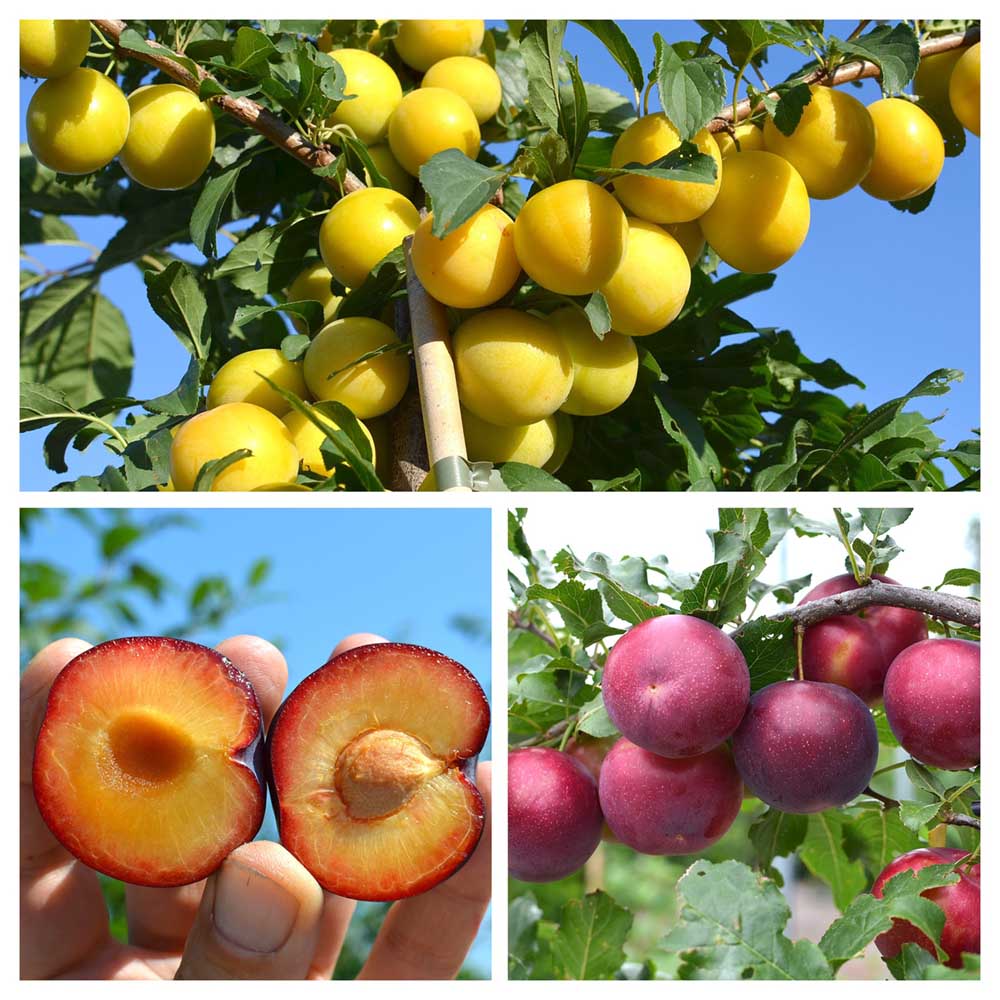
 História sibírskej slivky sa začala písať na konci 19. storočia keď sa jeden z jej rodičov, japonská slivka, stala populárnou v USA, Európe, Južnej Afrike, na Novom Zélande a v Austrálii. V severnejších oblastiach sa ale japonská slivka napriek pokusom nerozšírila pre svoju slabú odolnosť voči mrazom a pre nedostatok odrôd, ktoré by boli schopné chuťovo konkurovať domácej slivke.
História sibírskej slivky sa začala písať na konci 19. storočia keď sa jeden z jej rodičov, japonská slivka, stala populárnou v USA, Európe, Južnej Afrike, na Novom Zélande a v Austrálii. V severnejších oblastiach sa ale japonská slivka napriek pokusom nerozšírila pre svoju slabú odolnosť voči mrazom a pre nedostatok odrôd, ktoré by boli schopné chuťovo konkurovať domácej slivke.
Začiatky šľachtenia na Kryme
Príbeh vzniku sibírskej slivky pokračoval na konci 40. rokov minulého storočia keď začala botanička Klaudia Fjodorovna Kostina, ktorá pracovala v Nikitskej botanickej záhrade v Jalte, skúmať opustené ovocné záhrady, ktoré po vojne zostali na južnom pobreží Krymu. Jej cieľom bolo získať miestne odrody ovocných druhov vhodných pre doplnenie zbierky. Medzi inými druhmi našla aj veľké množstvo veľmi chutných odrôd myrobalánu. Ich plody dozrievali spolu s marhuľou v júli, o mesiac skôr ako domáca slivka. Jedinou nevýhodou bolo nedostatočne veľké ovocie, preto ďalším logickým krokom bolo kríženie s najlepšími odrodami japonskej slivky vyšľachtenými L. Burbankom v Kalifornii. Krížením získala prvé hybridné odrody skoro dozrievajúcej veľkoplodej slivky vhodnej aj pre pestovanie v extrémne nepriaznivých klimatických podmienkach. Kombinácia najlepších vlastností japonskej slivky a myrobalánu v nových odrodách sa ukázala ako veľmi úspešná.
Pokračovanie šľachtenia na Kryme
Na predošlú šľachtiteľskú prácu úspešne nadviazal akademik Genadij Viktorovič Jeremin s tímom spoluautorov na Krymskej experimentálnej šľachtiteľskej stanici VIR. Postupom času bolo do krížení zakomponovaných viac druhov rodu Prunus čo vyústilo do vzniku celého radu multihybridných odrôd sliviek v ktorých navzájom spolupracujú najlepšie gény myrobalánu (Prunus cerasifera), japonskej slivky (Prunus salicina), ussurijskej slivky (Prunus ussuriensis) a čínskej slivky (Prunus simonii). Miestne krymské odrody myrobalánu preniesli na hybridy svoju dobrú adaptabilitu na podnebie severných oblastí s chladnými zimami a nestabilným jarným počasím, odolnosť proti chorobám, príjemnú sladkokyslú chuť, skoré dozrievanie plodov a dlhé obdobie zimného spánku. Japonská slivka prispela svojou veľkoplodosťou. Cennou vlastnosťou sibírskych sliviek je ich zvýšená tepelná tolerancia a vyššia odolnosť voči suchu v porovnaní s domácou slivkou. Výsledný slivkový hybrid nazvaný Prunus × rossica kombinuje to najlepšie z pôvodných rodičovských komponentov.
Prínosy pre ovocinárstvo
Moderné ovocinárstvo preferuje odrody s vysokou odolnosťou voči abiotickým a biotickým faktorom prostredia, čo umožňuje znižovať zaťaženie pesticídmi počas ich pestovania a získavať ekologicky nezávadné plody a z nich vyrobené suroviny a výrobky. Preto sa zvýšená odolnosť voči klasterosporióze (Stigmina carpophila syn. Clasterosporium carpophilum), monilióze kôstkovín (Monilia cinerea) a červenej škvrnitosti listov sliviek (Polystigma rubrum) hodnotí ako veľká výhoda v pestovaní. Na krymskej experimentálnej šľachtiteľskej stanici VIR boli vyšľachtené nové odrody sibírskej slivky s dobou dozrievania od tretej dekády júna do tretej dekády augusta, so zvýšenou odolnosťou kvetných pukov a dreva voči mrazu, odolnosťou voči chorobám a škodcom, pričom vysoká produktivita je kombinovaná s vynikajúcou chuťou ovocia. Vysoký výnos, skorý nástup do plodnosti ( v 2. roku po výsadbe), skoré dozrievanie plodov, schopnosť plodov dozrievať počas skladovania, stabilná kvalita aj počas skladovania po obratí, to všetko prispelo k rýchlemu získaniu sympatií ovocinárov a záhradkárov.











